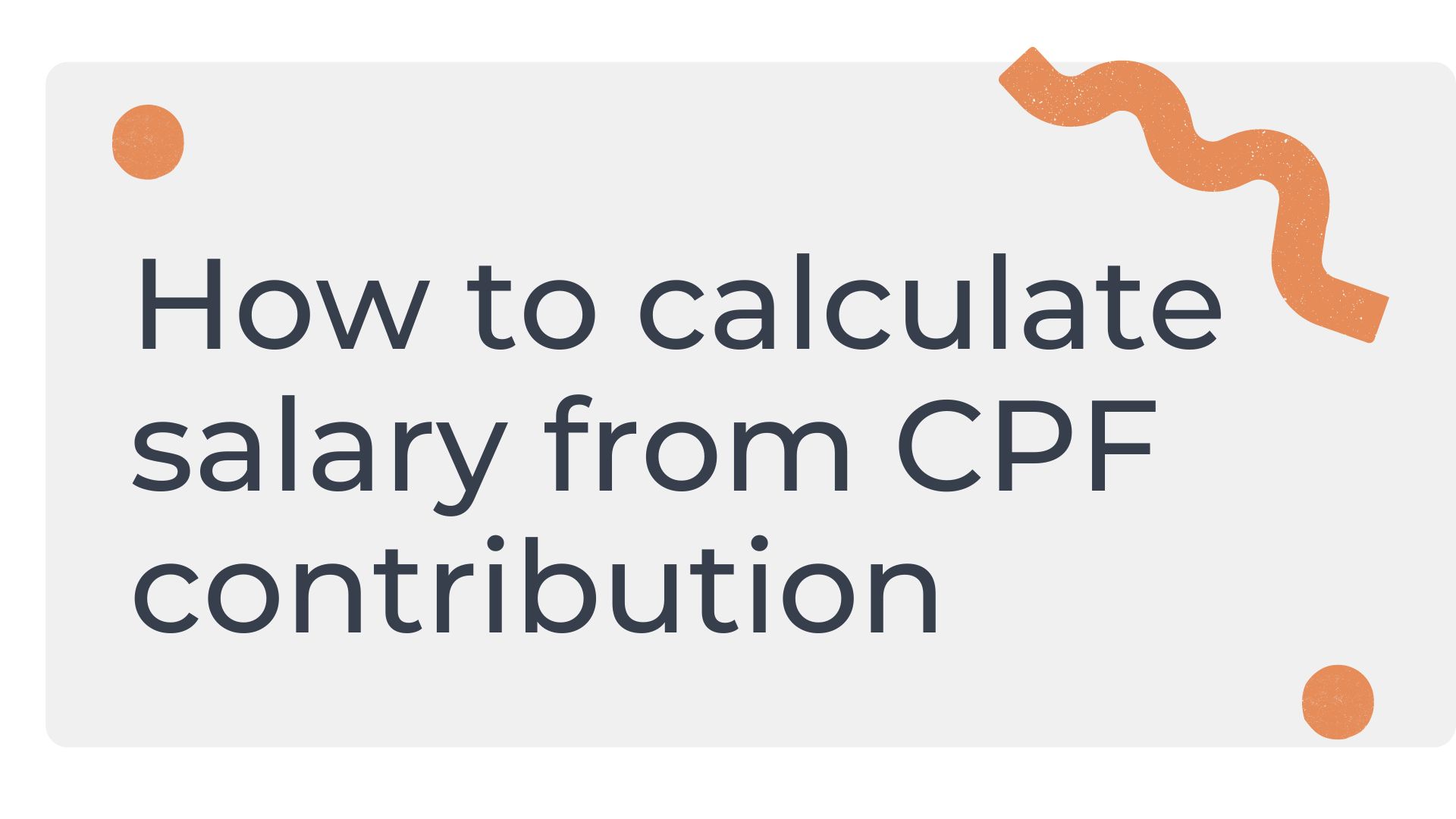To my fellow Singaporeans, Have you ever seen your CPF contribution and thought, “What is this really doing to my salary?” One is not alone on this count. Today, let us simplify the calculations of salary from the CPF contributions. Get a kopi, and let’s get into it!
The Components of CPF Contributions: An Overview
Before delving into the more intricate details of calculations, let us get an overview of what CPF has to do with. CPF is derived from the Central Provident Fund and it is simply our national social security system which is actually intended to serve as old age pensions and cover retirement, health care, and housing needs. Both the employer and employees make monthly contributions to the CPF based on a portion of employees’ salaries.
Nothing extraordinary of contribution rates-they are based on factors including:
- Your age
- Your citizenship status
- Your monthly wage
In 2024, the total CPF contribution for most Singaporean employees under the age of 55 is 37% of their monthly wage, broken down as 17% from the employer and 20% from the employees.
How to Calculate Salary from CPF Contribution
Now we come to the heart of the issue. Here is a systematic explanation of how to derive salary from CPF contributions:
- What is your CPF contribution? The first step is to check your CPF statement or payslip to see what contribution there is in your CPF account.
- What is your age group and corresponding contribution rates? Let’s check the current CPF contribution rates for your age group. In this example, we will assume that you are below the age of 55, when the total contribution rate is 37%: 20% from you and 17% from your employer.
- Calculate your gross salary Using this formula: Gross Salary = (Employee’s CPF Contribution × 100) ÷ Employee’s Contribution Rate
Thus, if the CPF contribution is $1,000, Gross Salary = ($1,000 × 100) ÷ 20 = $5,000
- Confirming your figures: To verify that the calculation was done correctly, calculate 37% of the gross salary, which should match the total CPF contribution (your contribution + employer’s contribution).
$5,000 × 37% = $1,850 (Total CPF Contribution) $5,000 × 20% = $1,000 (Your Contribution) $5,000 × 17% = $850 (Employer’s Contribution)
Bingo! You have successfully derived your salary from the CPF contribution.
Also Read:- Complete Central Provident Fund Guide for Foreign Workers in Singapore
How to Calculate Salary from CPF Contribution: Considerations and Caveats
Now, before you run to calculate everyone’s salary, there are a number of things to have in mind:
- CPF Contribution Ceiling: There exists a ceiling on the wage of monthly salary that can attract CPF contributions. That amount will remain effective from 2024 at $6,000. If your salary is above $6,000 in a month, it follows that your contributions under CPF are calculated based on $6,000, not your actual salary.
- Additional Wage Components: Aspects of your remuneration such as bonuses or commissions are referred to as Additional Wages and will be treated differently regarding CPF contributions. This could complicate calculations.
- CPF Contribution Salary Ceiling: There is also an annual salary ceiling for contributions which will, on and from 2024, amount to $102,000. This means any amount that is earned over and above this ceiling is no longer a subject of contribution.
- Normalizing for Partial Months: For whatever reason, you started or left the employer halfway through the month, CPF contributions (and thus the calculation method) will be prorated down.
Also Read:- Payroll Software for Singapore: Streamline CPF & Empower Startups
Practical Applications: Why This Matters
You might be wondering, “Why do I need to know how to calculate salary from CPF contribution?” Well, here are a few scenarios where this skill comes in handy:
- Job Offers: When you’re evaluating a job offer, understanding the relationship between salary and CPF contributions can help you assess the true value of the compensation package.
- Salary Negotiations: Knowing how to calculate your total wage from CPF contributions can be a useful tool in salary negotiations, especially if you’re discussing take-home pay versus gross salary.
- Financial Planning: Understanding your total wage helps in budgeting and financial planning, as you can better estimate your take-home pay and plan your expenses accordingly.
- Checking for Discrepancies: This knowledge allows you to double-check your payslip and ensure your employer is making the correct CPF contributions.
Wrapping it all Up: Power Yourself with Information.
That is a little calculation of salary from contributions, a small thing but one of the most important pieces to start controlling the finances. It makes you better understand your compensation package and makes you a much more informed employee and saver.
Remember, however, that generality. If your employment situation is complicated, as well as for many other reasons, you should always consult with your human resources department or financial advisor to get advice tailored to your needs.
Stay curious, stay informed, and keep growing your financial literacy, Singapore!
For more detailed information on CPF contribution rates and calculations, check out the official CPF website.






